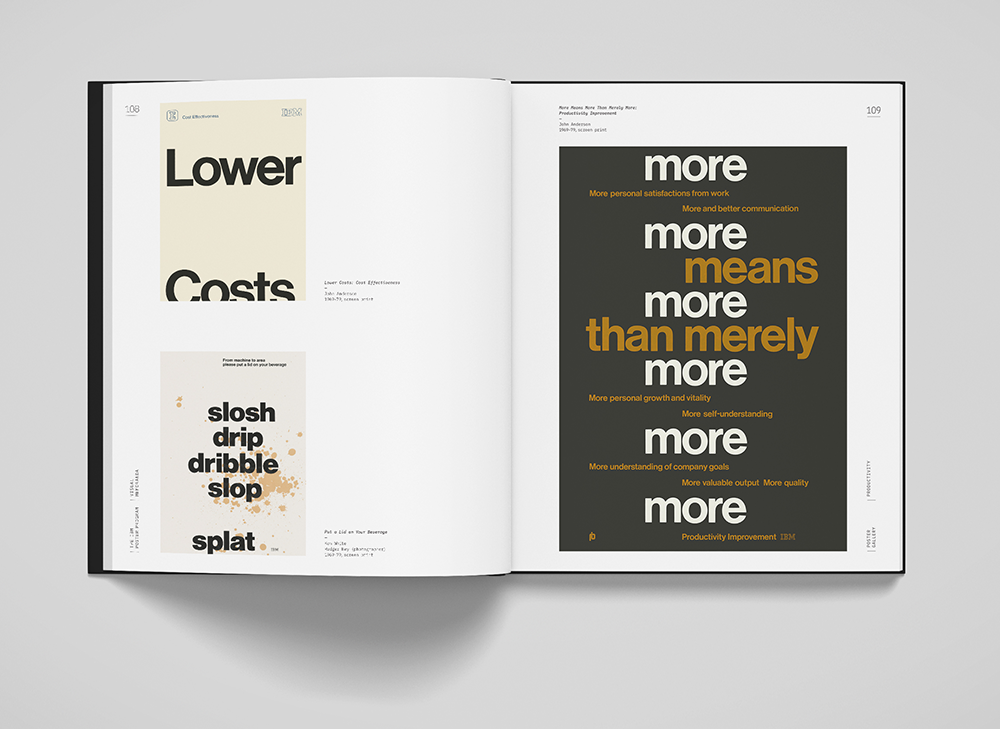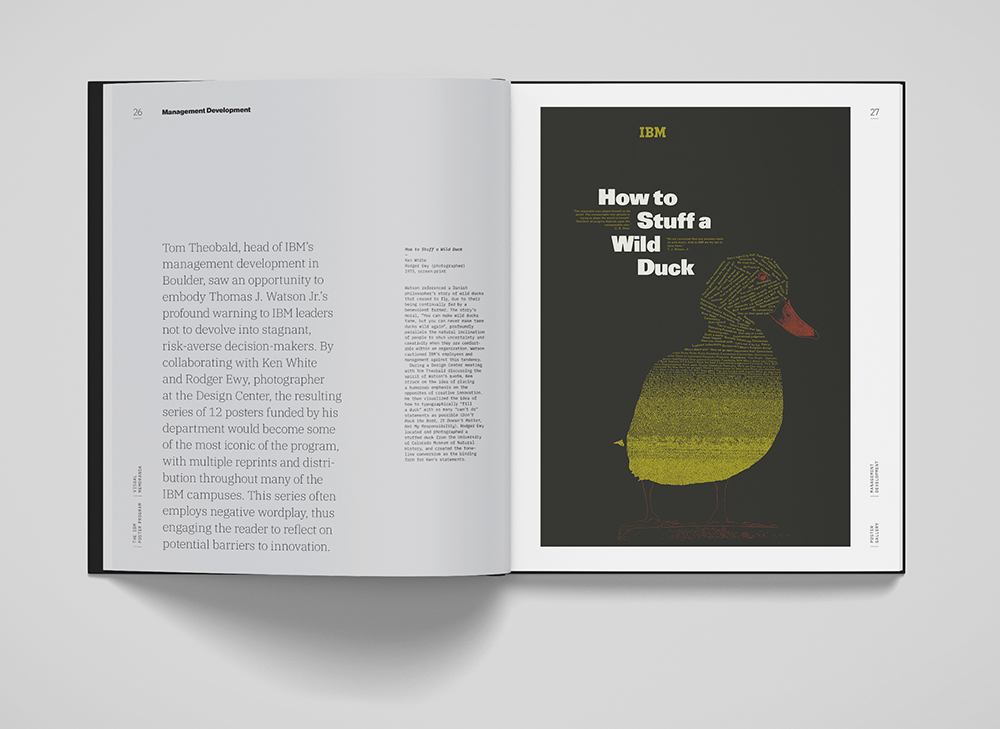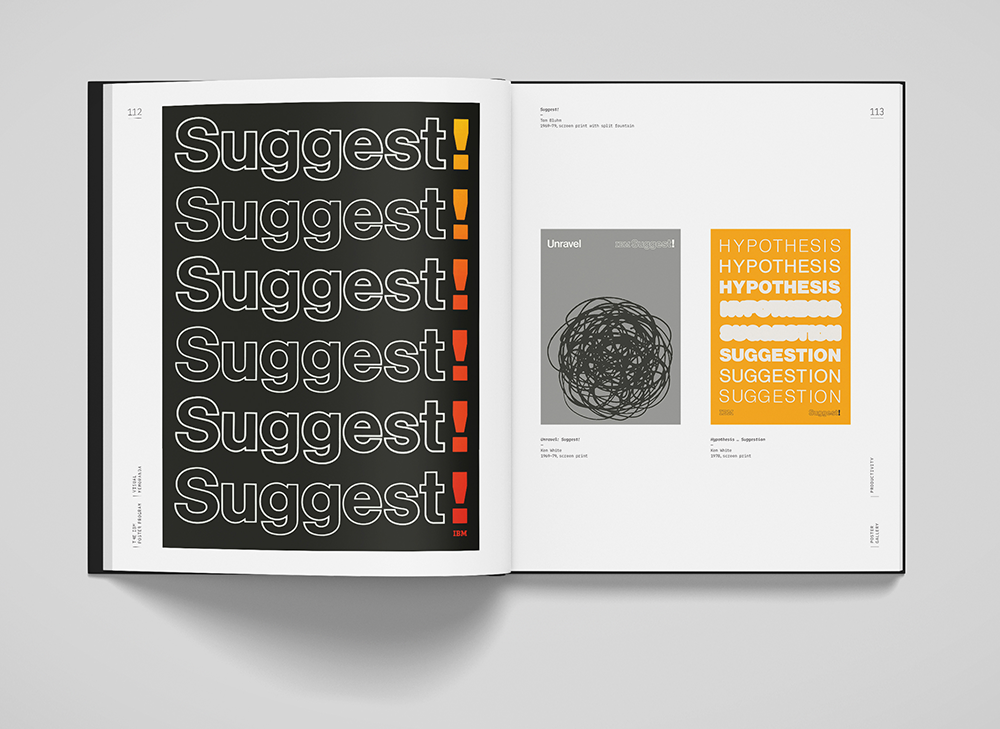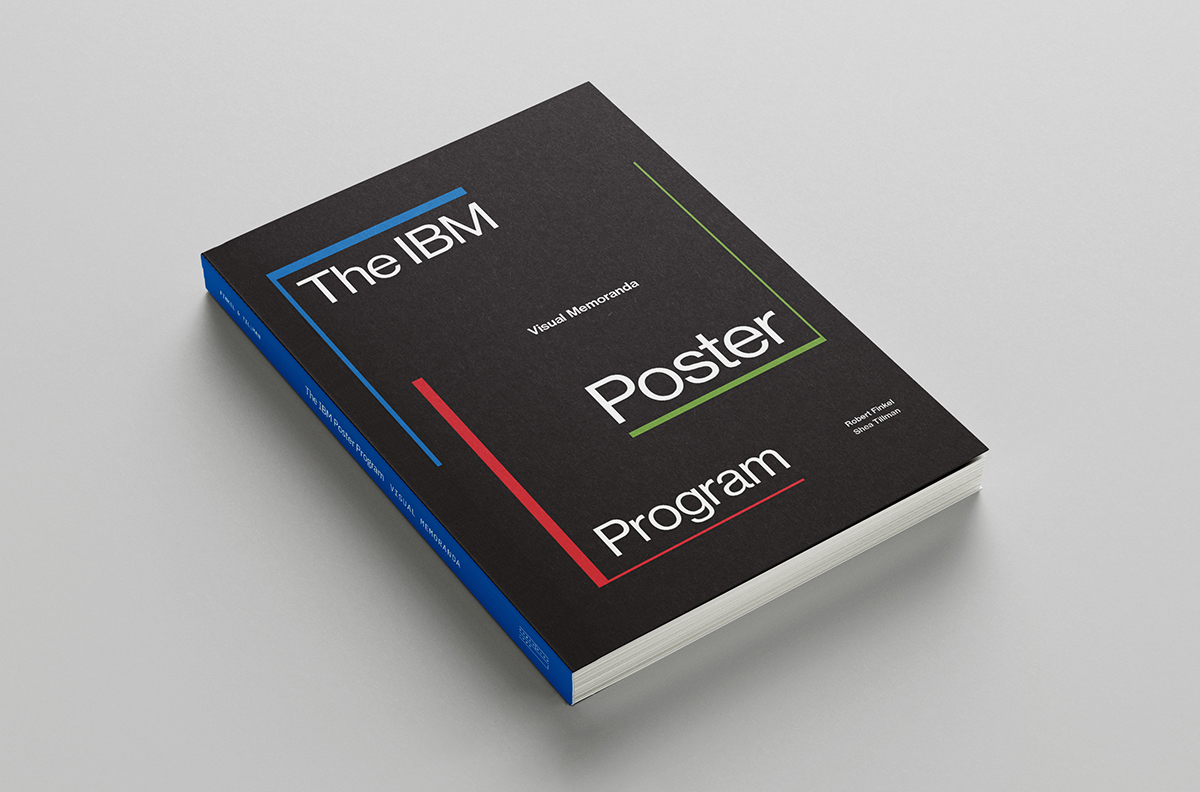
Editor's Note: The following text and images are from The IBM Poster Program: Visual Memoranda, a new book by Robert Finkel and Shea Tillman, out now from Lund Humphries and published with permission of the publisher.
The decades following World War II ushered in an era of unprecedented growth for International Business Machines (IBM), as innovations in electronic data processing and the miniaturization of transistor-based electronics transformed the Armonk, New York, company into a multibillion-dollar colossus. Prior to the ubiquitous computer landing on every desktop in America, large organizations employed IBM’s room-sized mainframe computing systems for large-scale scientific and commercial applications. When IBM’s mainframes helped land a man on the moon in 1969, the company employed over 250,000 people in 100 countries and was producing some of the most advanced products on earth.
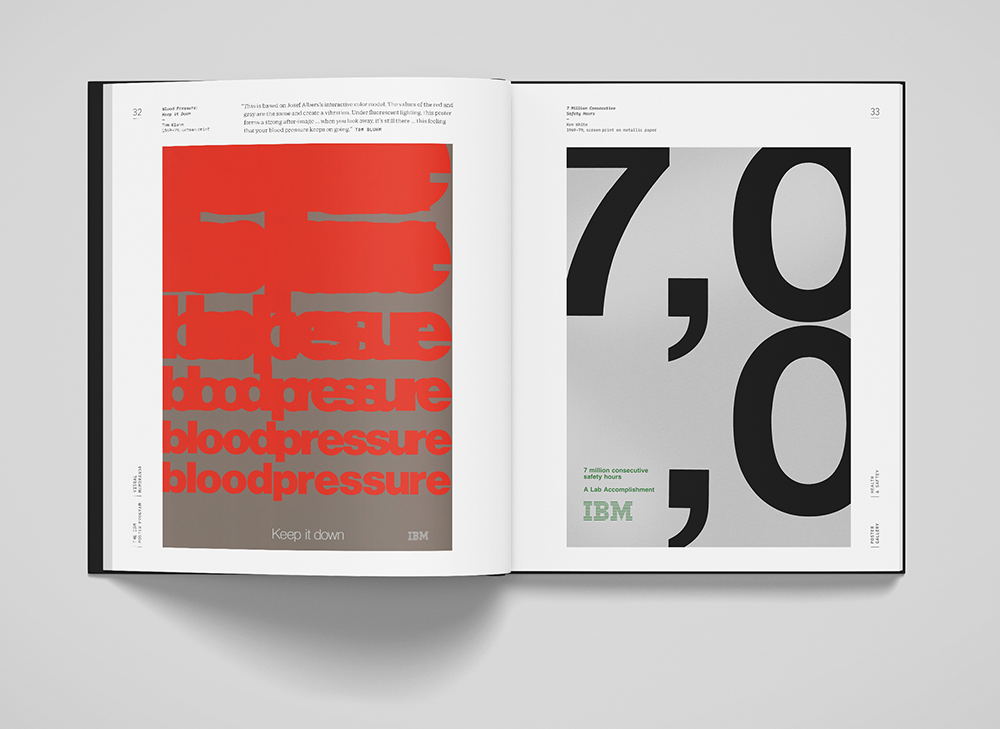

First opened in 1966, IBM-Boulder was primarily responsible for the development and production of magnetic-tape drives. The Design Center supported innovation in the laboratory and manufacturing plant within a 85,000 sq-ft campus.
Boulder, Colorado offered an alternative lifestyle choice, making it unique among the dozen centers built during the laboratory and manufacturing boom of the 1960s. Less restrained than the northeast U.S., yet not so free-wheeling as California, its small college-town culture was planted in the middle, leading to a balance of open understanding and communication. Designers were attracted to Boulder for its cowboy-meets-counterculture lifestyle, and their love for the rugged beauty of the landscape. This was reflected in the Design Center’s relaxed dress code, close-knit community, and a group that took their work, but not themselves, too seriously.

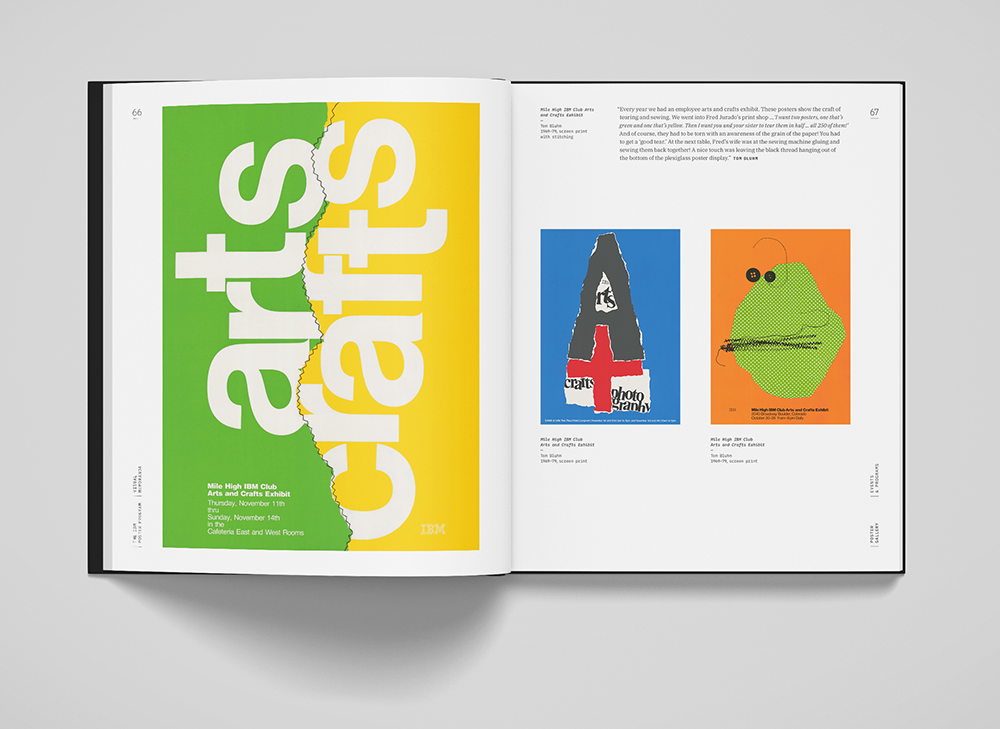
Influenced by Paul Rand’s creative direction over IBM’s corporate identity, staff graphic designers Ken White — who had studied under Rand at Yale University— John Anderson, Tom Bluhm, and photographer Rodger Ewy developed posters as a platform for elevating internal communications and initiatives within the company. While daily tasks for corporate graphic designers often included layout work on newsletters, binders, symbols, booklets, and brochures, the visually clear, single-message format of the poster offered a unique creative outlet and latitude for experimentation. Due to the continual demand for internal communications, designers often worked after hours and on weekends in order to meet print deadlines. Each poster was designed within a Root 2 (15 × 21 in) format, and painstakingly produced, using screen printing by a small printshop operated by Fred Jurado, or offset lithography by Frederic Printing — both in Denver, Colorado. Posters were then shipped to multiple locations to be displayed in hallways, conference rooms, and cafeterias throughout IBM campuses. Subject matter included everything from encouraging equal opportunity policies, to reminders on best security practices, to promoting a family fun day.
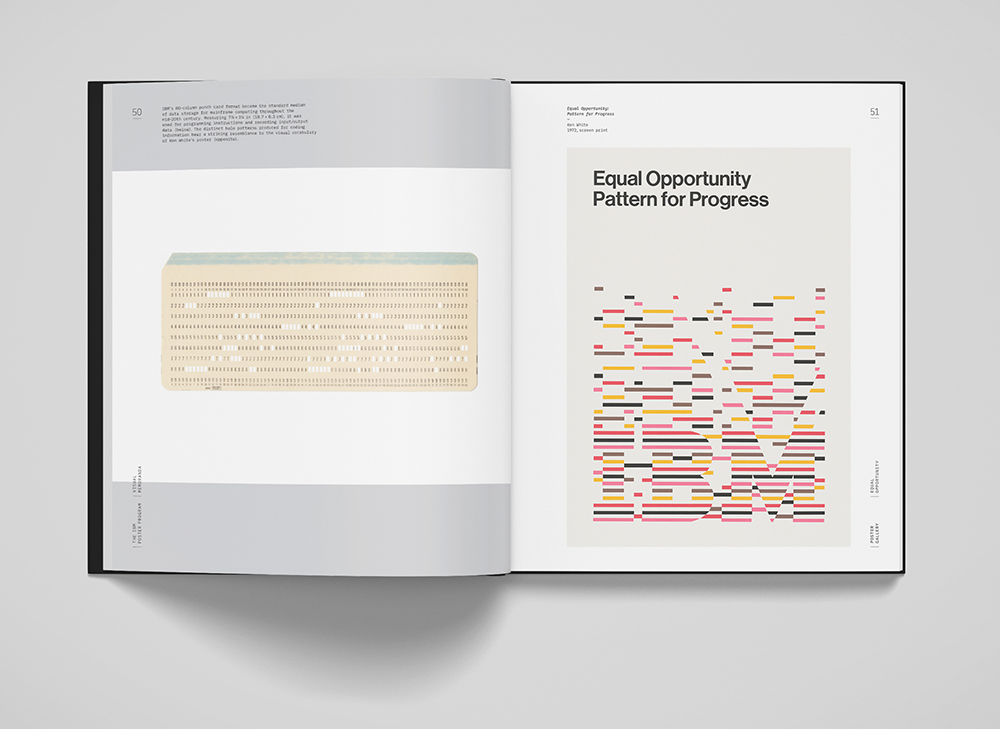
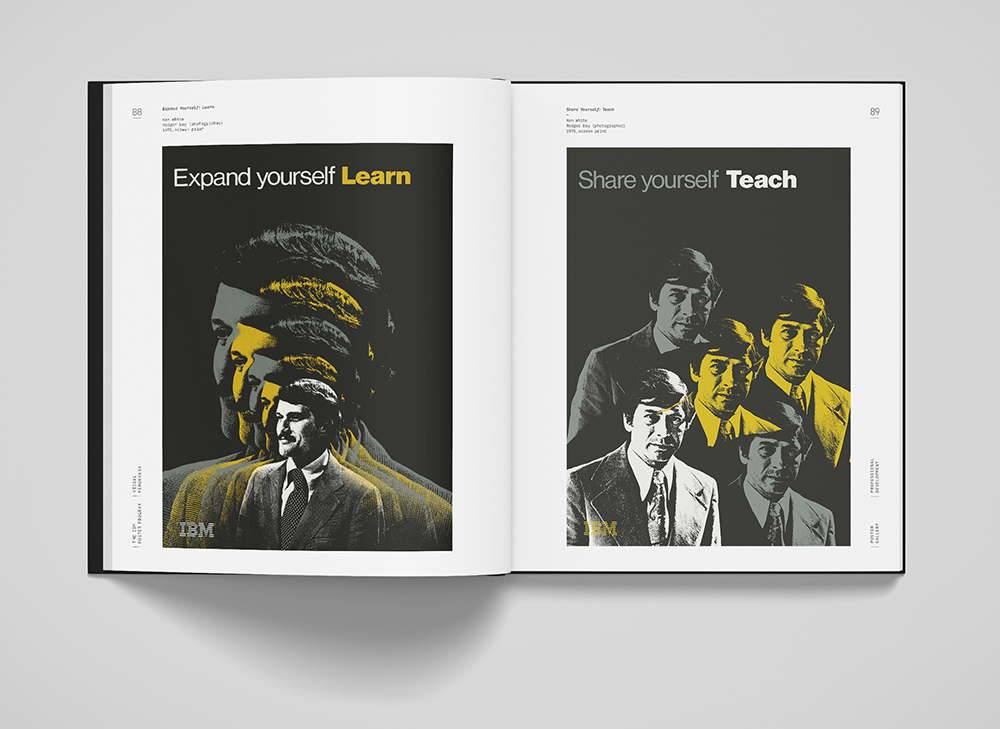
It is estimated that in the 15 years that the IBM poster program was active in the Boulder Design Center, over 500 posters were designed and produced by the staff. The sheer volume of this high-level design work, coupled with the uncompromising print craft is nothing short of astounding. This book displays over 100 of these innovative posters that stand as an exemplar of mid 20th century corporate design.
